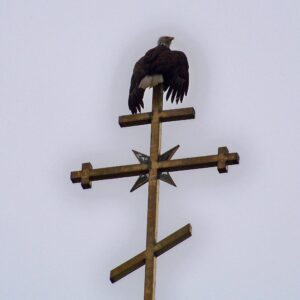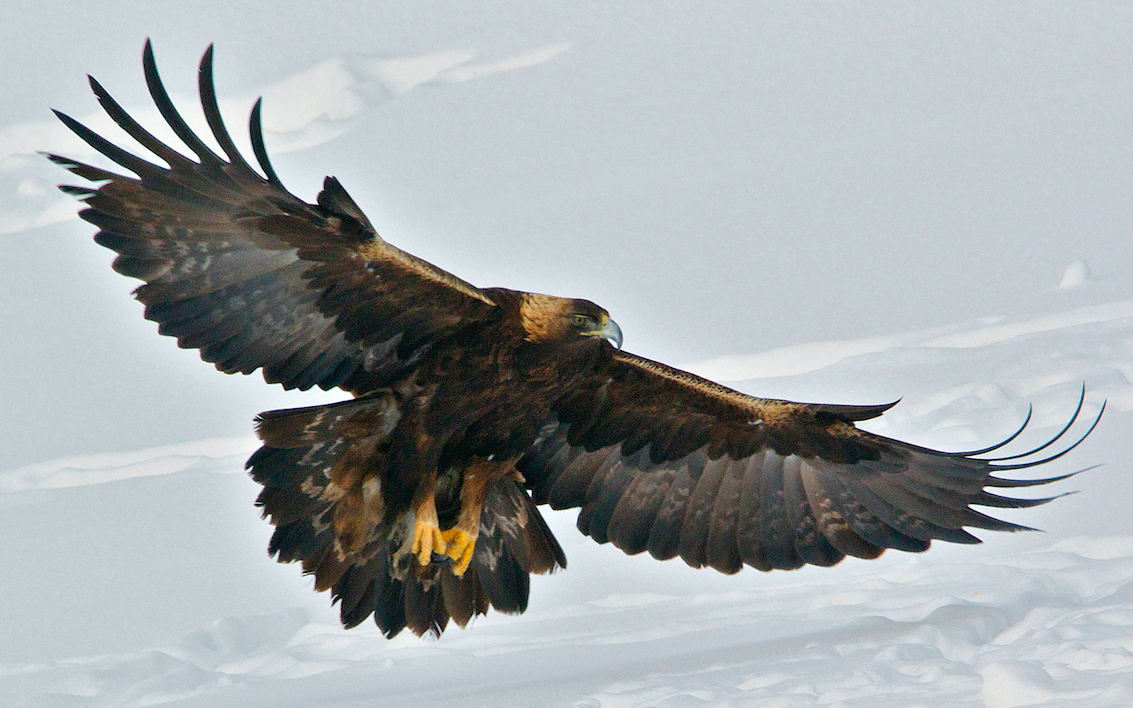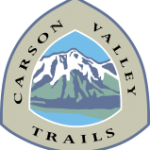
Since the 2020 Eagles and Agriculture event is happening this weekend, I thought I would talk a bit about these amazing winter visitors to the Carson Valley. Eagles & Agriculture is one of the most unusual events on any state’s calendar. It attracts hundreds of visitors to the Carson Valley each winter for a unique opportunity to photograph the birds, tour the ranches, and gape in wonder as bald eagles congregate in the meadows.
According to the Audubon Society, the Carson Valley is designated as an IBA, which means an Important Bird Area. There are few well-watered valleys that drain the eastern slope of the Sierra Nevada Mountains, and with ever-increasing development these few valleys are growing ever-smaller in the extent of habitat they offer wildlife. The Carson River running through our valley is heavily tapped for irrigation and distributed through agricultural fields. The irrigated pasture and hay meadows supported in part by distributed irrigation offer habitat for a variety of birds. As you probably have noticed, raptors are abundant in the valley, particularly in winter, and there is a growing population of Bald and Golden Eagles that take advantage of the calf birthing season that is timed to peak in February. The eagles concentrate to feed on protein-rich afterbirth, and a growing number of people are arriving to watch the spectacle, often through the organized Eagles and Agriculture event.
The Bald Eagle, is our national symbol and a bird that has never failed to thrill me every time I see one. Like most raptors, the females are larger than the males, weighing up to 14 pounds and having a wingspan of 8 feet! The males weigh up to 10 pounds and their wingspan is about 6 feet. They are mostly dark brown up until they are 4 years old, then they get their characteristic coloring with the white head and tail.

The Bald Eagle is an Endangered Species Act success story. By 1963, with only 417 nesting pairs of bald eagles remaining, our national symbol was in danger of extinction. Habitat destruction and degradation, illegal shooting, and the contamination of its food source, largely as a consequence of DDT, decimated the eagle population. Also, some bald eagles have died from lead poisoning after feeding on waterfowl containing lead shot, either as a result of hunting or from inadvertent ingestion. Habitat protection afforded by the Endangered Species Act, the federal government’s banning of DDT, and conservation actions taken by the American public have helped bald eagles make a remarkable recovery. On June 28, 2007, the US Fish and Wildlife Service announced the recovery of our nation’s symbol and removal from the list of threatened and endangered species.

Golden Eagles also winter here in the Carson Valley, and they are roughly the same size as the Bald. The Golden is less of a scavenger and more of a predator than the Bald Eagle, regularly taking prey up to the size of foxes and cranes. The Golden Eagle was important to many Native American tribes, who admired the eagle’s courage and strength, and who ascribed mystical powers to the bird and even to its feathers.
Although their number have undoubtably declined from historical levels, current populations thought to be stable. May not be able to tolerate human disturbance near the nest, so they tend to build nests away from human activity. Both Golden and Bald Eagles mate for life.
Golden and Bald eagles are a protected species in the United States. The U.S. Fish and Wildlife Service can fine you up to $10,000 if you possess an eagle feather or body part. In an effort to further protect these beautiful and majestic birds, some utility companies are modifying their power poles to reduce raptor electrocutions. The birds are so large that their wings and legs can touch two power lines at once to create an electrical circuit. New raptor-safe power pole construction standards mean a safer environment for the birds.
So keep your eyes peeled for these magnificent birds this winter!
